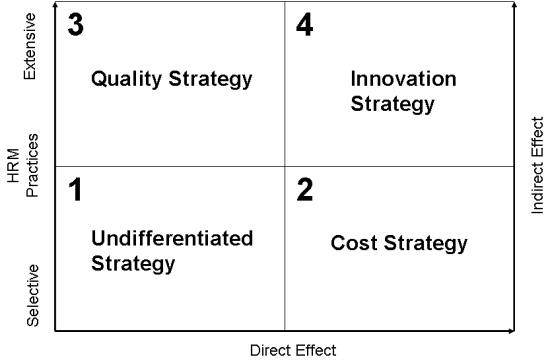|
|
AM Lecture 3
International
Management > Asian
Management > Converging management?
> Chinese management >
Weaknesses >
Guanxi > Guanxi guanxi everywhere...
> More on CFBs > Ding & Akhtar's Matrix
Ding & Akhtar's Matrix

This table represents the different types of Chinese businesses, some
of which have convergent strategies, becoming more Westernised, while
others are diverging from businesses in Western societies. Human
Resources Management (HRM) is the objective Western practice of
recruiting the right person for the job, rather than a family member.
- Undifferentiated Strategy - Enterprises that are caught
up in organisational inertia through the "iron rice-bowl" tradition
of lifelong employment, accompanied by an undifferentiated
competitive strategy. These firms exemplify "hard divergence"
cases, as there is little pressure or willingness to change.
- Cost Strategy - Enterprises with a dominant cost strategy
that positively affects a limited number of HRM practices aimed at
developing human capital. Their main aim to keep things as cheap as
possible, so their strategies move a little away from the SOE style,
as it is recognised that some Western practices can be beneficial.
They represent a case of "soft divergence" from a past
dominated by "iron rice bowl" practices.
- Quality Strategy - Enterprises that emphasise the quality
strategy, which influences HRM practices extensively, but indirectly
through the the strategic role of the HR function. This group
respects a discontinuity from the traditional HRM practices and a "soft
convergence" with the strategic role of the HR function.
- Innovation Strategy - Enterprises where the strategy
affects HRM practices directly, indirectly and extensively. These
enterprises may well represent the case of "hard convergence".
Most of these firms tend to be in service and high-technology
industries. They are also often the newest companies, as they are
run by graduates who have had a Western education.
In general, the moral of the story is that management practice only
changes when it has to.
Transfer abroad
Organisational culture change
|
|



